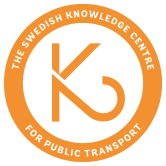Is escooter a desirable mode for future mobility?
Is escooter a desirable mode for future mobility?
A study based on cities in Sweden, Denmark, and Norway
With the severed emergency of dealing with climate change challenges, developing solutions in the transport sector for reducing greenhouse emission become unprecedentedly significant. The development in technology provides more alternatives for potentially making fewer trips and shorter trips by car (Bai and Jiao, 2020). For example, sharing mobility services based on conventional transport modes e.g. car, bicycle, as well as innovative modes, such as escooter, free-floating sharing schemes have been discussed in recent years. One of the effective alternatives to car is a seamless inter-modality service which enable travelers to travel from door to door without taking much more time and cost than if one travels with a private car (Olafsson, Nielsen and Carstensen, 2016). While public transport is the backbone for the inter-modality, walking and cycling are the most used and available modes served as first and last mile modes, dissatisfying towards the available mode or the unavailability of the frist/last-mile mode have been the main barriers for passengers to travel with inter-modality (Baek et al., 2021). The last mile mode should be as convenient, fast, easy to access, cheap as possible for connecting the door to PT, and PT to door. Escooter emerged in a sharing scheme and received its popularity for short-distance trips since 2017 in American cities and 2019 in European cities (James et al., 2019; Baek et al., 2021; Christoforou et al., 2021), it belongs to the micromobility trend which has a potential to serve as frist/last-mile mode (Merlin et al., 2021), or an alternative to the private car, although the urban contexts differ the performance of escooter (Smith and Schwieterman, 2018; Gössling, 2020). When escooter is rapidly adopted in many cities over the world, it remains largely unclear regarding how escooter has been used in different urban contexts, especially in Nordic cities, and if it has been used either as the last mile solution mode or a mode for a single trip substituting other modes in the real trips. Without sufficient scientific evidence, it is difficult to tell the potential of escooter for the future mobility, therefore, it blocks the way for making effective policy to regulate escooter.
The objective of the study is to investigate the usage of the escooter based on cities in Sweden, Denmark, and Norway in order to explore the potential of escooter for the future mobility. The research result is expected to answer three research questions:
- Who are the users and what are their travel patterns regarding the trip characteristics and the modes they are substituting in Nordic cities?
- To what extent, it is serving as first/last-mile mode for connecting to public transport? How does the urban form shape the first/last-mile trips?
- What are the motivations and challenges and opportunities for the cities to regulate the escooter?
